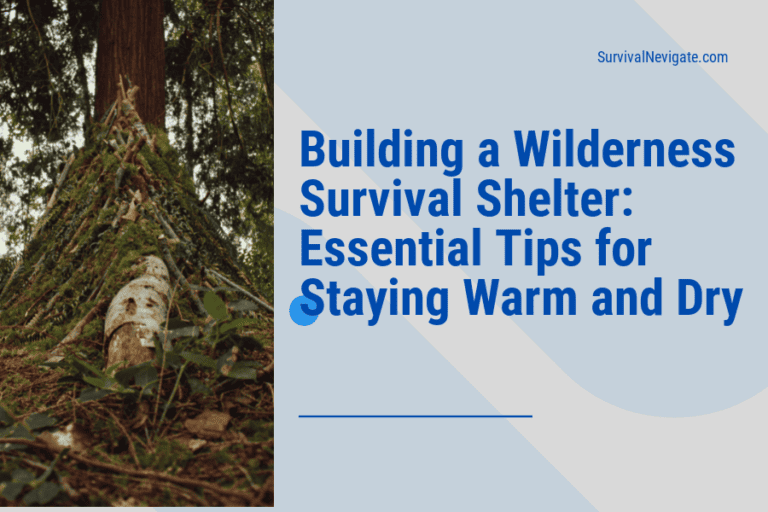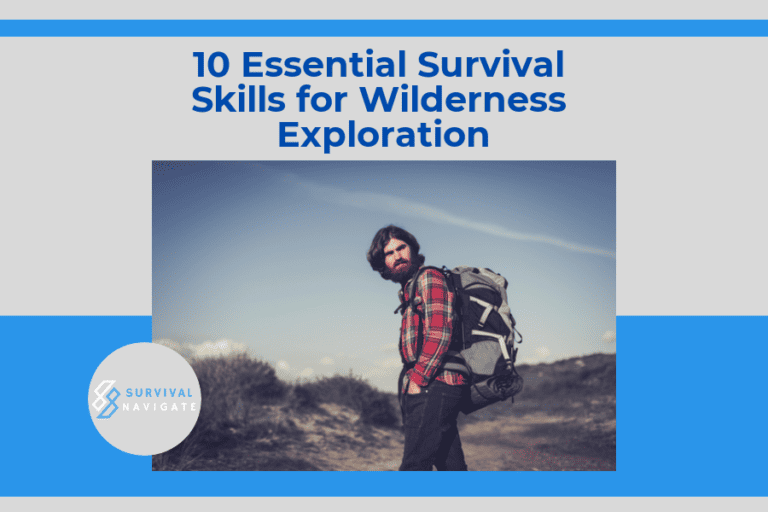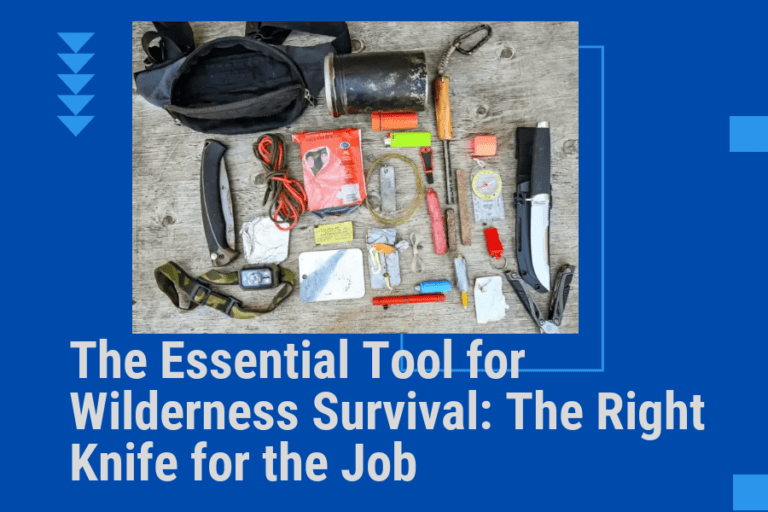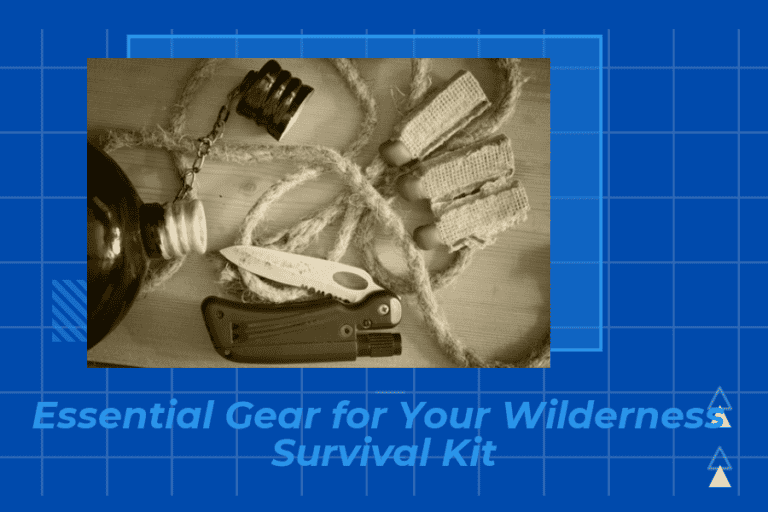The Essential Wilderness Survival Kit: What You Need to Stay Safe and Sane in the Wild
Are you planning to embark on an outdoor adventure in a remote wilderness area soon? Then it is essential that you equip yourself with the necessary supplies to ensure your safety and peace of mind while venturing into the unknown.
A wilderness survival kit is an essential part of your preparation. In this article, we will discuss what should be included in your wilderness survival kit list so that you can stay safe and sane during your journey.
We will go through the essential items that you need to bring with you for preparing for the unexpected, and how to make the most of the items you have to help you make the most of your wilderness experience. So, if you’re ready, let’s get started!

Clothing for Survival: What to Wear in the Wild
One essential item to include in your wilderness survival kit list is the right clothing. The clothes you wear in the wild can mean the difference between life and death. When preparing for a wilderness adventure, it is important to choose clothing that is lightweight, breathable, and comfortable.
Look for fabrics that are quick-drying and moisture-wicking, such as wool, synthetic fabrics, and microfibers. Avoid cotton, as it absorbs moisture and takes longer to dry.
Your clothing should also be durable and provide adequate protection from the elements. Invest in a good raincoat and long-sleeved shirt to keep you warm and dry in cold weather, and a wide-brimmed hat or baseball cap to keep the sun off your face. You should also bring a few spare changes of clothing in case you need to replace any items that get wet or damaged.
Finally, make sure you bring along a good pair of boots or other sturdy shoes. Footwear is important in keeping you safe and comfortable while walking or climbing in the outdoors. Choose boots or shoes with good ankle support, and make sure they are waterproof. Your feet will thank you!
Shelter: How to Protect Yourself from the Elements
The key to protecting yourself from the elements while out in the wilderness is having the right shelter. Your shelter should be sturdy and light enough to transport easily without compromising the structure. A tarp is a great option as it can be used both as a shelter and as a groundsheet.
To make a tarp shelter, first use some rope to tie the tarp to a tree or other solid anchor. Then, use rocks or sticks to create a frame and secure the sides of the tarp around it. Make sure the tarp is large enough for you to fit comfortably inside and provides protection from wind, rain, and snow.
Having a sleeping bag is also essential for keeping yourself warm in cold weather and for providing an extra layer of comfort. When looking for a sleeping bag, make sure you choose one that is rated for the temperature range you will be in. If possible, bring a sleeping mat or air mattress for extra insulation from the ground. Your sleeping bag should also be lightweight and easy to transport.
In addition to having a sturdy shelter, it is important to bring other items to help you stay safe and comfortable while in the wilderness. Always bring a water bottle with enough water to last your entire journey and a few days of emergency supplies.
A first-aid kit, map, compass, and emergency communication device are also essential. Additionally, it is important to bring layers of clothing, as well as a hat and gloves. By having the right supplies in your wilderness survival kit, you can stay safe, comfortable, and well-prepared for any situation while in the outdoors.
Fire: Creating Heat and Light in the Wilderness
Fire is one of the most important elements in surviving in the wilderness. It is essential for creating heat and light, as well as for cooking and keeping predators away. A wilderness survival kit should include several items for creating fire in the wild, such as waterproof matches, a fire starter, and tinder.
If you are able to find firewood or other combustible materials nearby, you can use them to start a fire. The fire can then be used to keep warm during cold nights and to cook food. It is also useful for providing light, which can be lifesaving when you are navigating through the wilderness in the dark.
Another fire-related item to include in your wilderness survival kit is a fire extinguisher. This will help you put out any accidental fires that might occur when you are in the wild. A good fire extinguisher should be lightweight, durable and easy to use. Lastly, it is a good idea to bring a flashlight so that you can see what you are doing when you are trying to start a fire or put out an accidental one.
All in all, it is essential to have the necessary items to create fire in the wilderness. Fire is the key to keeping you warm, fed, and safe in the wild, so make sure to pack all the necessary fire-related items for your wilderness survival kit.

Food and Water: Essential Supplies for Sustenance
Food and water are the two most important supplies that should not be overlooked when preparing for a wilderness adventure. Food provides energy and nutrition for the body and sustenance for the soul, and without it, our bodies and minds will be too weak to cope with the rigors of outdoor exploration.
Similarly, water is essential for keeping us hydrated and healthy, and a lack of it can lead to dehydration, which can be detrimental to our health.
Packing light, nutritious and long-lasting foods is ideal, such as freeze-dried foods, dried fruits, nuts, and energy bars. Make sure to pack a reliable water filter and plenty of bottles or a hydration system to provide fresh and clean drinking water.
Additionally, pack a fire starter, a few camp stoves, and cooking utensils such as pots, pans, and plates. These will enable you to prepare warm meals and boil water in the event of an emergency. Finally, make sure to bring daily vitamins and supplements to ensure that you get the essential nutrients that you need to stay healthy.
These are the two essential supplies that you need to make sure you have in your wilderness survival kit. Food and water will keep you strong, energized, and safe even in the most remote and unpredictable wilderness areas. So, make sure to pack adequate amounts of both when you plan for your next outdoor adventure.
Tools and Equipment: Essential Gear for Wilderness Survival
A wilderness survival kit is essential for any outdoor adventure, especially if it takes place in a remote wilderness area. It should include essential items that are necessary to ensure your safety and peace of mind while on your journey. The most important items to include in your wilderness survival kit are a first aid kit, shelter, fire-starting tools, and navigation tools.
A first aid kit is the most important item in your wilderness survival kit. It should include items like bandages, adhesive tape, antiseptic wipes, pain relievers, and any other items that may be necessary in case of an emergency. Shelter is also essential, and should include items like a tarp, rope, and duct tape.
Fire-starting tools like a lighter and fire starter will also be invaluable in a survival situation, as it may be necessary to create a fire for warmth, cooking, and for signaling for help. Navigation tools such as a compass and map are also essential for finding your way out of a difficult situation.
It is also important to include items in your wilderness survival kit that will help you maintain your morale and sense of psychological wellbeing during your journey. This could include items like playing cards, snacks, and a journal. With the right combination of items, you can be better prepared for any unexpected events that may arise while out in the wilderness.
First Aid and Safety: How to Stay Safe and Healthy in the Wild
When venturing into the wilderness, it is important to be prepared for whatever comes your way. A wilderness survival kit is a must-have for any outdoor adventure. It should include items intended to help you survive in case of an emergency. Some of the essential items you should include in your kit are a first-aid kit, a fire-starting tool, a flashlight or headlamp, a knife, a compass, a whistle, a water bottle or water purification system, and some non-perishable food such as granola bars or trail mix.
When packing your first-aid kit, make sure to include items such as bandages, antiseptic wipes, gauze pads, tape, scissors, over-the-counter medications, and tweezers. It is also important to have a basic understanding of first aid procedures so that you can respond quickly and effectively in the event of an emergency.
Finally, it is always a good idea to stay informed about the local weather conditions and terrain of the area where you are traveling. Make sure to bring a weather-proof map of the area, and familiarize yourself with the emergency phone numbers of the region. Being prepared and staying informed will help you to stay safe and healthy in the wild.







